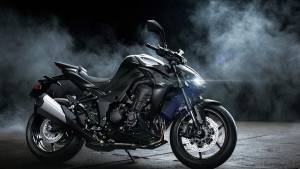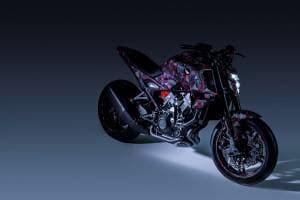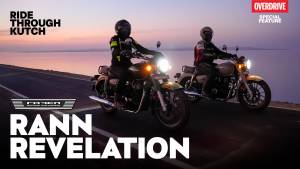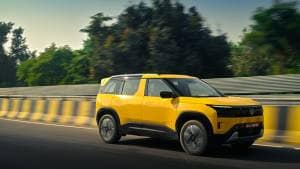How the Kawasaki Versys 650 differs from its platform brothers, the Ninja 650, ER-6n and the Vulcan S cruiser
The Kawasaki Ninja 650, aka ER-6f, is a major commercial success for India globally. It began with a simple, reliable 650cc parallel twin making 72PS and evolved from there. In India so far, Kawasaki sells the Ninja 650 and its naked version the Er-6n. And now the range will expand with the addition of a motorcycle that we expect will be the star of the Kawasaki show, the Versys 650. Kawasaki also revealed the Vulcan S cruiser last year which is the odds on favourite for the next motorcycle that Kawasaski will bring to India. This will complete the line of 650s and you'll be surprised at how similar to each other they really are. Here's is a story about how Kawasaki nailed their 650cc platform.
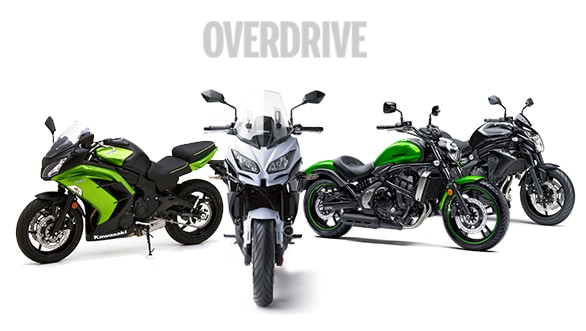
The basic engine , as we've noted is a 649cc parallel-twin - which is the same thing as an inline twin - placed across the frame. All the three motorcycles, the Ninja 650, the Versys 650 and the Vulcan S share the same displacement as well as the same bore-stroke as well as compression ratio. As in, it is the same liquid-cooled fuel injected engine. The Versys and the Ninja 650 also share the same fuel injection setup more or less, employing dual 38mm throttle bodies. Kawasaki Europe says the Vulcan S differs here. It uses two throttle bodies with sub throttles.
But here is the thing. While all three engines are quite similar, the final results are not. In fact, All three differ in the power output. The Vulcan S, naturally, is the weakest of the three, making just 61PS at 7,500rpm. Notably, this peak power comes lower in the rev band than all the other bikes. Similarly, the Vulcan S also makes 1Nm less torque than the other at 64Nm, but it does so at 6,600rpm, 400rpm earlier than the others. The Versys and the Ninja 650 share peak power points - 8,500rpm, but the Versys makes 3PS less - 69 Versys, I mean versus, 72PS. With us so far? The two motorcycle still share the same peak torque - 64Nm at 7,000rpm.

Essentially, all three motorcycles run a completely different cam timing and ignition map configuration. This allows the Vulcan to make loads of torque early in the revs as a cruiser should at the expense of power up top. The Ninja 650, if you were to consider it as the baseline, makes, let's say a more balanced decision between power and torque - one that we know works rather well in Indian conditions. The Versys, though, has a direct connection to touring and that means it wants midrange a lot more than top-end power. That's why it has less peak power - it has a more robust mid-range.
The engines make enough difference in the way they make their power and deliver it for Kawasaki to be able to run the exact same gearing on all three. So all three boast six-speed gearbox with a wet multiplate clutch, identical primary and final reduction ratios. The sole difference seems to be that the Vulcan's lower performance and different role allows it to run a slightly lower spec chain than the other two.
Given the cost structures within which the three bikes have to operate, all the three Kawasakis use steel frames. This brings weight but keeps costs in check. But the frames aren't identical. The Versys and the Ninja 650 use the same 25° rake but the Vulcan S is raked out to 31°. The Versys also uses slightly less trail than the Ninja 650. The big difference is obviously in the suspension. The Ninja 650 offers 125mm of front wheel travel and 130mm of rear wheel travel. The Versys offers 25mm and 15mm more respectively. The Vulcan offers 130mm at the front - remember the shock is inclined so actual shock absorption is less effective - and just 80mm at the back. The tyre sizes are identical 120/70ZR17 at the front and 160/60ZR17 at the rear for all three.
Once again, there is a difference in the braking equipment - the Vulcan only uses a single 300mm disc up front while the Ninja and the Versys both get dual semi-floating 300mm petal discs. The Vulcan and the Versys both have 250mm rear discs compared to just 220mm for the Ninja. This is easily understood too - the Vulcan's format places more weight on the rear wheel while the Versys is vastly more likely to have a greater rear bias thanks to either passengers, luggage or both than the Ninja.
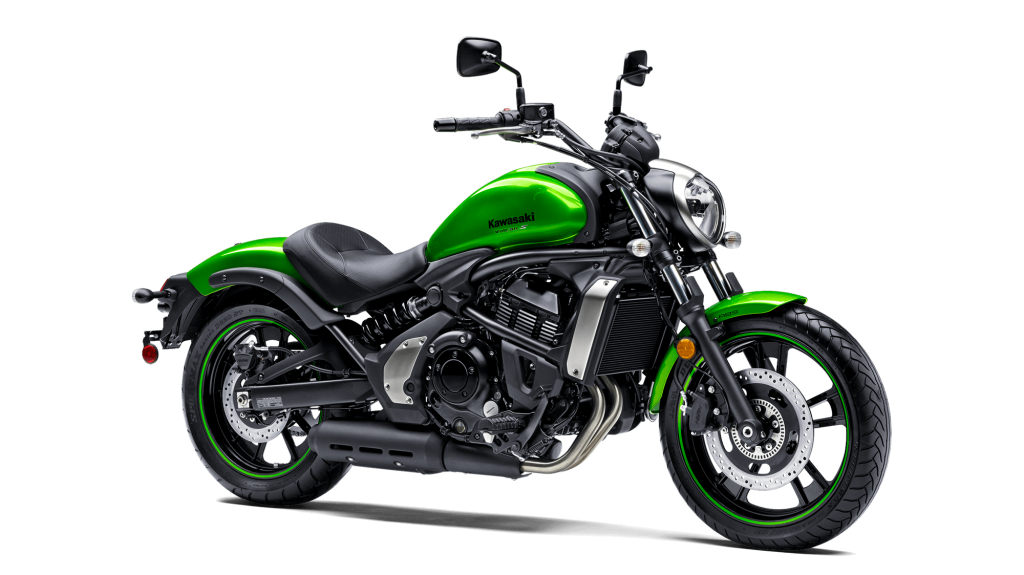
This is where it gets complex. The Ninja and the Vulcan share spec sheets on this count. 41mm telescopic forks up front and 7-step preload adjustable shock at the back, famously inclined and offset to the left side of the bike for packaging. Naturally, the Vulcan's long and low design mandates a linkage while the Ninja is a direct mount shock.
Where the Versys leaves the two behind is here. It offers 41mm forks all right, but these are Showa SFF (Separate Function Forks) which feature adjustable rebound damping on the right leg and the adjustable preload on the left leg. Similarly, the rear shocks is similar in layout to the Ninja but offers remote spring preload adjustability - another nod to its potential role as a bike which will experience a wide variance in loads.
All this adds up. The Vulcan is naturally the largest motorcycle here physically and also the heaviest - the ABS version is 228kg at the kerb. The Ninja 650 is the smallest and lightest at 211kg for the ABS model (2kg over non-ABS bike). The Versus is large and all, has a 5mm greater wheelbase, more ground clearance, a 21 litre tank (5 more than Ninja) and a 35mm higher seat height. It also tips the scales at 216kg for the ABS model. Although we will happily say that 5kg additional over the Ninja 650 is very respectable.
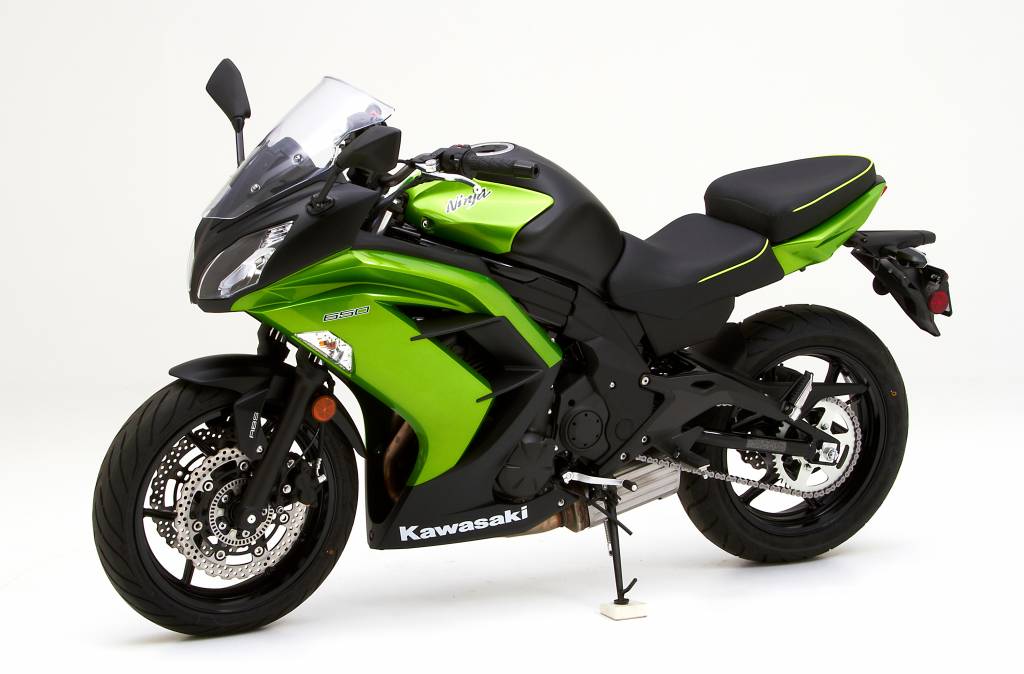
It's the extra space, extra adjustability, ABS and physical size that will push the cost of the Versys up. Note especially the suspension, that's a fair bit more expensive than the base kit on the Ninja 650. That's what you'll pay for in price difference terms - Rs 1.1 lakh is our estimate of the price gain over the Ninja 650. The gap might be a bit smaller if Kawasaki does the right thing and give the Ninja 650 standard ABS - which will push its price up as well.
The other takeaway from this is how platform engineering can produce dramatically different results with relatively minor tweaks. India has already experienced this once in the KTM 390 Duke and the RC 390 where a minor change of rake and attendant change of wheelbase makes a dramatic difference. And now the Versys 650 will reinforce the idea.
Get ready to welcome one of the most India-ready middle-weights we have seen in the market yet.
Spec Comparo:Kawasaki Ninja 650 vs Kawasaki Versys 650 vs Kawasaki ER6n vs Kawasaki Vulcan S
| Kawasaki Ninja 650 | |
| Engine Displacement (cc) | 649 |
| No. of cylinders | 2 |
| Power (PS) | 72.1@8,500rpm |
| Torque (Nm) | 64@7,000rpm |
| Valvetrain | 8v DOHC |
| Transmission | 6-speed |
| Wheelbase (mm) | 1,410 mm |
| Ground clearance (mm) | 130 mm |
| Fuel Tank (Litres) | 16 Litres |
| Kerb Weight (kg) | 211 |
| Power to weight ratio (PS/tonne) | 341.7 |
| UNDERPINNINGS | |
| Frame Type | Perimeter, high-tensile steel |
| Suspension Front | Telescopic fork |
| Suspension Rear | Monoshock with adjustable preload |
| Brakes (F/R) | 300mm disc/220mm disc |
| Tyre size (F) | 120/70 R17 |
| Tyre size (R) | 160/60 R17 |
| SAFETY | |
| ABS | No |
| Price (ex-Showroom) | Rs 5.37 lakh |
| Kawasaki Versys 650 | |
| Engine Displacement (cc) | 649 |
| No. of cylinders | 2 |
| Power (PS) | 69@8,500rpm |
| Torque (Nm) | 64@7,000rpm |
| Valvetrain | 8v DOHC |
| Transmission | 6-speed |
| Wheelbase (mm) | 1,415 mm |
| Ground clearance (mm) | 170 mm |
| Fuel Tank (Litres) | 21 litres |
| Kerb Weight (kg) | 214 / 216 (ABS) |
| Power to weight ratio (PS/tonne) | 322.4 |
| UNDERPINNINGS | |
| Frame Type | Tubular diamond, high-tensile steel |
| Suspension Front | USD with adjustable rebound damping and preload |
| Suspension Rear | Monoshock with remote spring preload adjustability |
| Brakes (F/R) | 300mm disc/250mm disc |
| Tyre size (F) | 120/70 R17 |
| Tyre size (R) | 160/60 R17 |
| SAFETY | |
| ABS | NA |
| Price (ex-Showroom) | Rs 6.8 lakh (estimated) |
| Kawasaki ER6n | |
| Engine Displacement (cc) | 649 |
| No. of cylinders | 2 |
| Power (PS) | 72@8,500rpm |
| Torque (Nm) | 64@7,000rpm |
| Valvetrain | 8v DOHC |
| Transmission | 6-speed |
| Wheelbase (mm) | 1,410 mm |
| Ground clearance (mm) | 130 mm |
| Fuel Tank (Litres) | 16 litres |
| Kerb Weight (kg) | 204 |
| Power to weight ratio (PS/tonne) | 353 |
| UNDERPINNINGS | |
| Frame Type | Tubular Diamond, high-tensile steel |
| Suspension Front | Telescopic fork |
| Suspension Rear | Monoshock with adjustable preload |
| Brakes (F/R) | 300mm disc/220mm disc |
| Tyre size (F) | 120/70 R17 |
| Tyre size (R) | 160/60 R17 |
| SAFETY | |
| ABS | No |
| Price (ex-Showroom) | Rs 4.96 lakh |
| Kawasaki Vulcan S | |
| Engine Displacement (cc) | 649 |
| No. of cylinders | 2 |
| Power (PS) | 61@7,500rpm |
| Torque (Nm) | 63@6,600rpm |
| Valvetrain | 8v DOHC |
| Transmission | 6-speed |
| Wheelbase (mm) | 1,575 mm |
| Ground clearance (mm) | 130 mm |
| Fuel Tank (Litres) | 14 litres |
| Kerb Weight (kg) | 225/228 (ABS) |
| Power to weight ratio (PS/tonne) | 271.1 |
| UNDERPINNINGS | |
| Frame Type | Perimeter, high-tensile steel |
| Suspension Front | Telescopic fork |
| Suspension Rear | Monoshock with adjustable preload |
| Brakes (F/R) | 300mm disc/250mm disc |
| Tyre size (F) | 120/70 R18 |
| Tyre size (R) | 160/60R17 |
| SAFETY | |
| ABS | Yes |
| Price (ex-Showroom) | Rs 4.92 lakh (estimated) |

